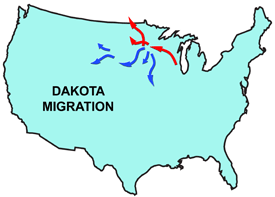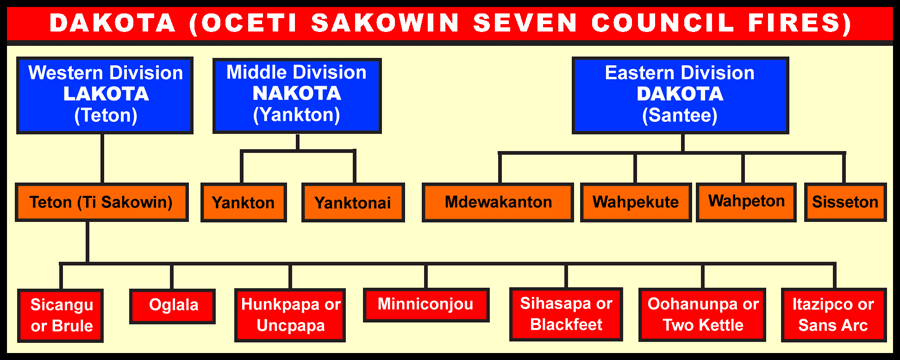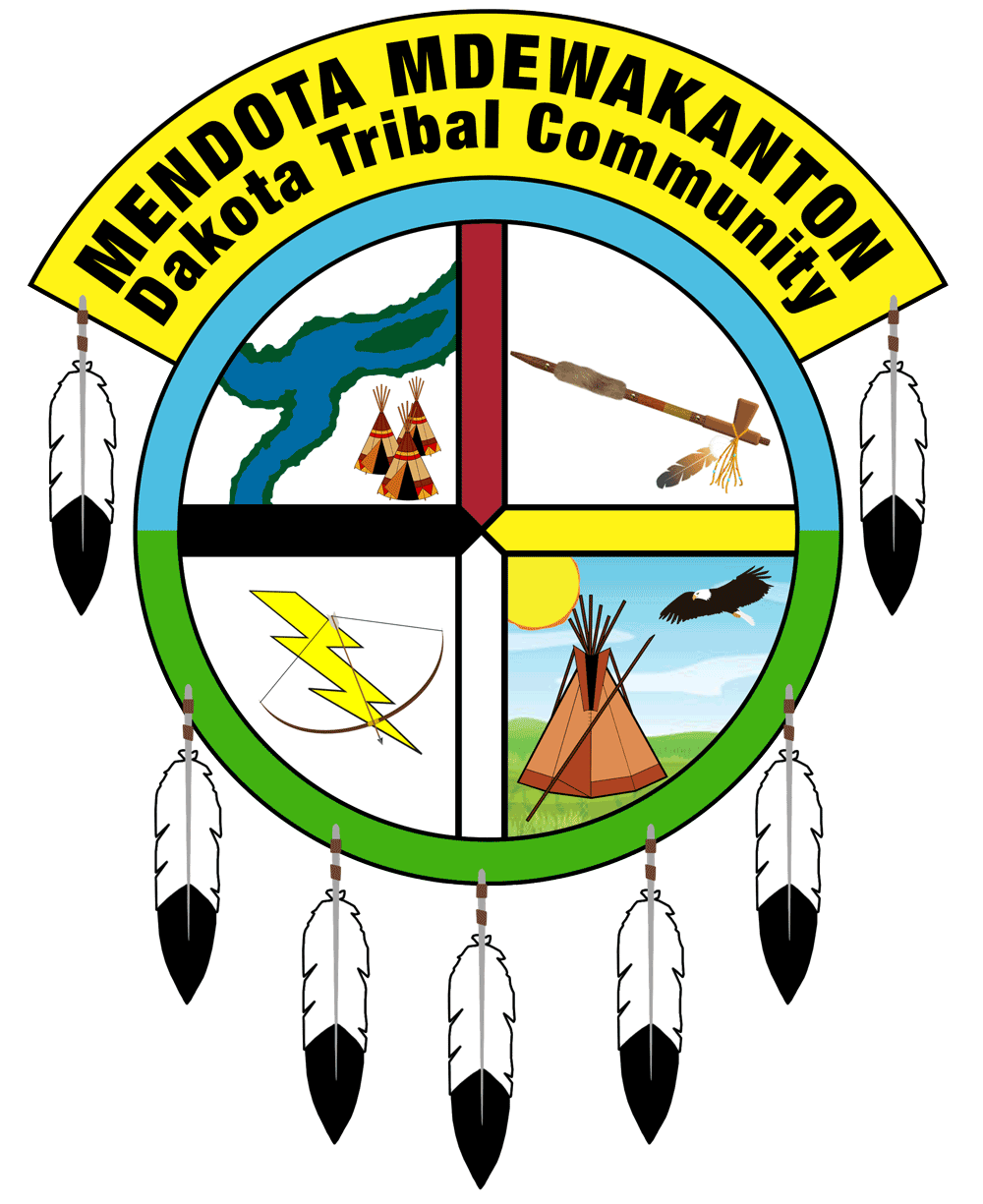The Spirit Lake Reservation, formerly Devils Lake Sioux Reservation, is located in north central North Dakota. The people of Spirit Lake are often called Dakota “Sioux,†a term dating back to the 17th century. “Dakota†means “friends†or “Oyateâ€â€”“the people.†The term “Sioux†is a corrupted version of an Ojibway-Algonquian term “Naud-owa-se-wug,†meaning “like unto the adders.†The term was later corrupted resulting in the retention of the syllable that sounds like “Sioux.†(Meyer, 1967, 1993) However, the Ojibwa always called the Dakotas “A-boin-ug†or “Roasters.†(Warren, 1984) The Dakota at Fort Totten are called the Mni Wakan Oyate —“the people of the Spirit Water.â€
White ethnographers’ interpretations of Dakota origin narratives place the Dakota origin in many eastern parts of the United States. These narratives are many and are well documented. However, they are not Dakota beliefs. These documents can be found in Indian studies departments or in the Minnesota Historical Society archives. However, recent findings in the Granite Falls and Browns Valley Man archeological sites and Waconia evidence confirm that aboriginal ancestors of the Dakota lived in Minnesota from 8,000 to 10,000 years ago.
According to Dakota oral history, the Dakota believed they were always in the area around the Minnesota River at Mille Lacs Lake. According to Dakota philosophy, the belief is that all living things originated from a great mysterious creator (God). In this philosophical context, the origin of the Dakota comes from the Creator and is a mystery—a truth only the Creator knows. If the Creator should want his people to know this, he would surely give them a sign. Dakota oral historians and holy men living in Dakota communities and reservations may share this information.
Of the seven original council fires of the great Dakota Nation, the two that make up the “Mni Wakan Oyate†(the people of the Spirit Water) are the Sisseton and Wahpeton bands. While the term Santee (Isanti) has been applied by non-Indian writers to both the Nakota and Lakota and all the Eastern Dakota as a group, the word Santee or Isanti only applies to the Bdewakanton, Sisseton, Wahpeton, and Wahpakute. Two treaties were made in 1851, one at Traverse Des Sioux with the Sisseton-Wahpeton and one with the Isanti (Bdewakanton Wahpakute) at Mendota (different bands). Therefore, the term Santee is not used in this guide when referring to the Spirit Lake people.
When the Sisseton and Wahpeton took possession of the land on the present-day reservation, there was a group of the “Cut Head band†of the Ihanktowana (Yankton) Dakota living in the Grahams Island area, as were many mixed bloods, Métis, and workers for the cavalry. The Cut Heads integrated and became a part of the Spirit Lake people.
In the early part of the 1700s, the Dakota occupied nearly the whole region of what is now Minnesota, except an extreme northern part, which had long been occupied by the Cree and Ojibway people. Before the time of contact between white explorers and the Dakota in the upper Mississippi Valley, the Teton Dakota moved onto the prairies and the Black Hills area. The Great Dakota Nation formed a political alliance known as the Seven Fireplaces, or Council Fires, or Oceti Sakowin. (Meyer) The Oceti Sakowin was a confederation similar to that of the Iroquois confederacy. The difference between the Iroquois confederacy and the Oceti Sakowin is that the Dakotas were culturally similar kinship groups, bands, or families which established social and political rules to govern themselves. These people were similar in their language and culture in their woodland’s environment. Later they became more distinct as they moved and adapted to the environment of the plains.
DAKOTA MIGRATION
Throughout the 1700s the Dakota bands moved westward, one by one, onto the open plains. Some of them may have left the forest in search of game or other food. Many were pushed out by the Ojibwa, who were stronger because they had obtained guns from French traders and explorers, while the Dakota still had bows and arrows. By the mid-1700s, it is believed that small bands of Teton had crossed the Red River and were exploring the western plains.

Dakota Migration.(Map by Cassie Theurer)
History suggests that the many tribes were once historically connected or may have shared the same language of the great Dakota Nation. Those tribes were the Mandan, Crows, Winnebago, Omaha, and Iowa. (Hill, 1911) The great Dakota Nation was divided into three dialects and seven major bands. The Eastern Dakota, speakers of the Dakota or “D†dialect, comprised four bands: the Mdewakanton, Wahpeton, Wahpekute, and Sisseton. The Middle Dakota, speakers of the Nakota or “N†dialect consist of the Yankton, and Yanktonai. The Yanktonai, who before the 1800s were living in what is now the southern two-thirds of Minnesota, had moved into southern North Dakota, eastern South Dakota and parts of Iowa and Minnesota. The Western or Teton Dakota, speakers of the Lakota or “L†dialect, were the largest division with seven bands: Blackfoot, Two Kettle, Miniconjou, Hunkpapa, Brule, Sansarc, and Oglala.
The Dakota of Spirit Lake in North Dakota comprise two of the Bands of the Eastern Dakota: the Wahpeton, the Dwellers Among the Leaves and the Sisseton, the People of the Ridged Fish Scales. Other Dakotas include the Wahpekute, the Shooters Among the Leaves and the Mdewakanton, the Dwellers Among the Spirit Lake (Mille Lacs Lake). Kappler calls these the Sioux of the Leaf, the Broad Leaf, and those who shoot in the Pine Tops. (Kappler, 128–129)

Dakota (Oceti Sakowin – Seven Council Fires). (Graphic by Cassie Theurer)
